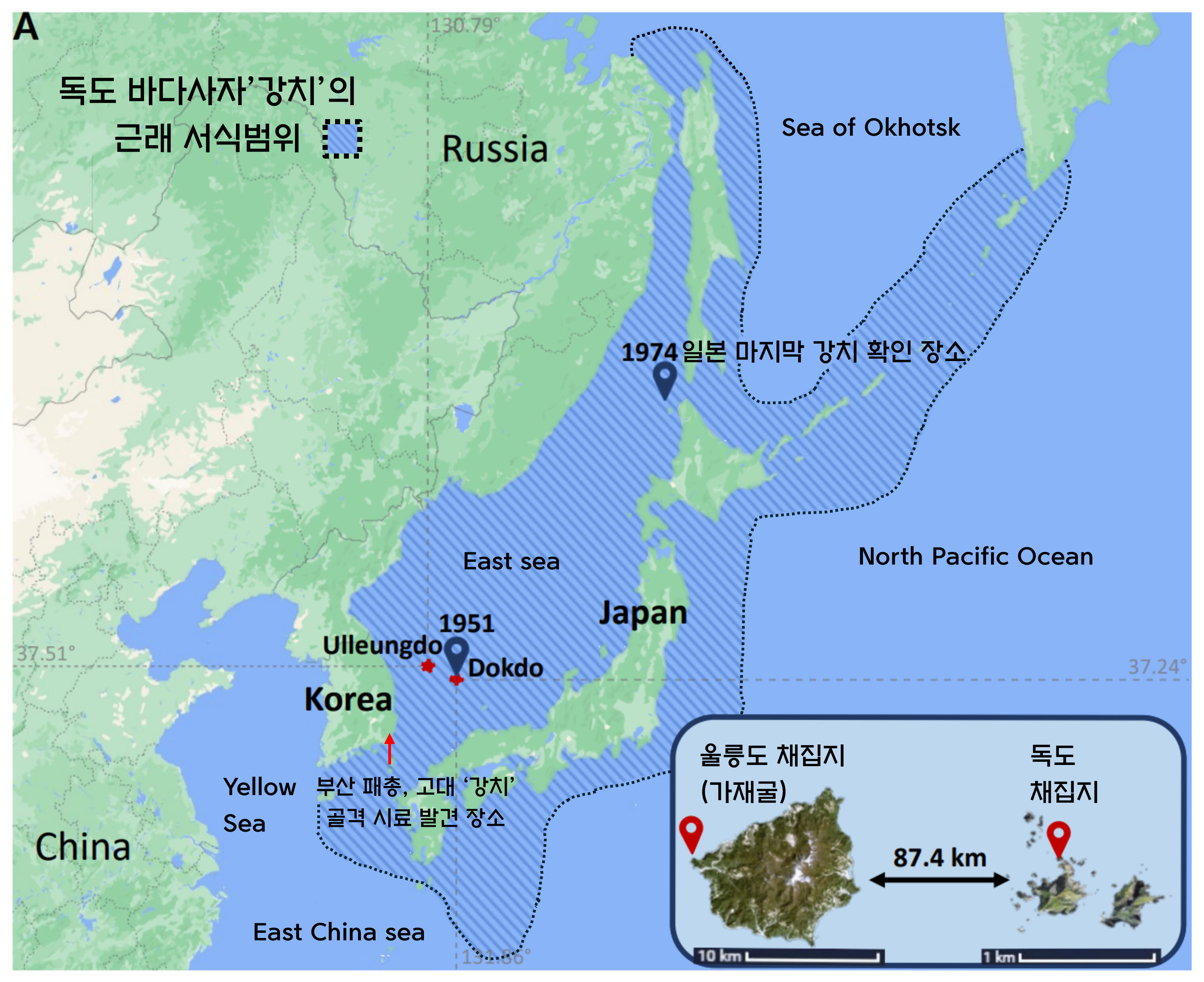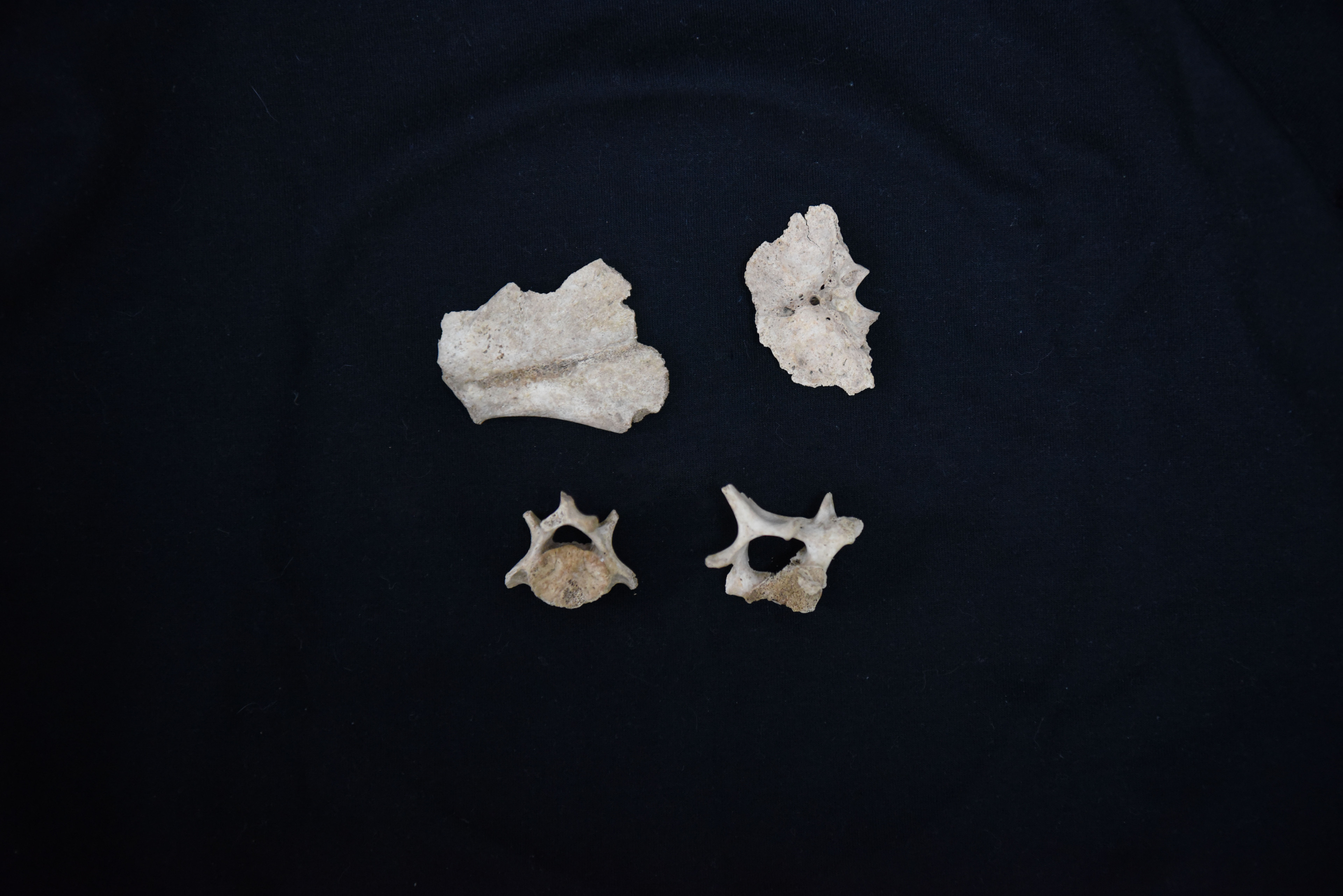
South Korea's National Institute of Fisheries Science (NIFS) recently announced that it has sequenced the full-length genome of the Dokdo sea lion (also known as "seal"), a species thought to have been extinct since the 1970s, and published a related paper online in the prestigious international journal BMC Biology (Springer).
The research team applied the latest ancient genome analysis methods to 16 sea lion bone fragments excavated from the Dokdo and Ulleungdo regions. They overcame the physical limitations of an old and limited sample size and a small amount of DNA extracted, successfully analyzing the entire genome of the Dokdo sea lion from a data set totaling 8.4 terabytes (TB).
The latest analysis results, the researchers added, provide the world's first scientific proof that the Dokdo sea lion separated from the California sea lion approximately 2 million years ago and evolved into a completely independent species.
Furthermore, traces of genetic exchange with Northern fur seals and Stella sea lions were also confirmed, providing new clues to the study of the evolutionary history of North Pacific marine mammals.

In particular, this study revealed that the Dokdo sea lion maintained genetic diversity even before its extinction.
This finding suggests that the cause of its extinction was not genetic factors, but rather indiscriminate overfishing by humans.
This paper is the world's first to sequence the entire genome of the Dokdo sea lion. The researchers added that the use of the term "Dokdo sea lion" in the title of an international academic journal carries significant significance in internationally demonstrating Korea's unique biological resources and sovereignty over Dokdo.
Furthermore, this paper, the fruit of a collaborative effort between the public, private, and academic sectors, including international researchers, provides an opportunity to demonstrate the technological capabilities of Korea's future industries, including cutting-edge bioinformatics technologies utilizing artificial intelligence (AI).
This research involved collaboration between the Korea Institute of Science and Technology (KIST) (Whale Research Institute, Department of Biotechnology), Seoul Grand Park, the Genome Research Foundation, Ulsan National Institute of Science and Technology (UNIST), the Aging Lab research team, and the Russian-European Institute of Genomics.
The Dokdo sea lion is a marine mammal that once inhabited the Korean Peninsula but became extinct between the 1950s and 1970s due to overfishing during the Japanese colonial period. Its closest relatives are the California sea lion and the Galapagos sea lion.

According to the International Union for Conservation of Nature (IUCN), approximately 50,000 sea lions inhabited Northeast Asian waters in the mid-1800s. By the 1950s, this number had plummeted to around 50, and in the 1990s, the sea lion was officially declared extinct.
Choi Yong-seok, the director of the National Institute of Fisheries Science, said, "Through this international collaborative research, not only has the origin of the Dokdo sea lion been revealed, but the Dokdo sea lion has also been listed in an international academic journal, which has served as an opportunity to further strengthen the geographical and historical traditions of our unique species." He added, "We will continue to research the genetic characteristics of various unique species in our waters to strengthen our biological sovereignty and contribute to laying the foundation for future industries."
Kim, J., Blazyte, A., Choi, JP. et al. Dokdo sea lion Zalophus japonicus genome reveals its evolutionary trajectory before extinction. BMC Biol 23, 234 (2025). https://doi.org/10.1186/s12915-025-02351-3
'NEWS & THESIS' 카테고리의 다른 글
| '발효된 흙과 살' 냄새를 풍긴 13만 년 전 시베리아 매머드 새끼 (1) | 2025.08.15 |
|---|---|
| 유인촌 동생 유경촌 신부와 내 세대 동물 대중스타 윤무부 선생 (6) | 2025.08.15 |
| 문화유산은 현대 기후 적응에 도움이 될까, 아니면 훼방꾼일까? (6) | 2025.08.15 |
| 독도 바다사자 강치 게놈 완전 해독 (8) | 2025.08.15 |
| 화성특례시, 국립고궁박물관 분관 유치위원회 출범 (5) | 2025.08.15 |




댓글